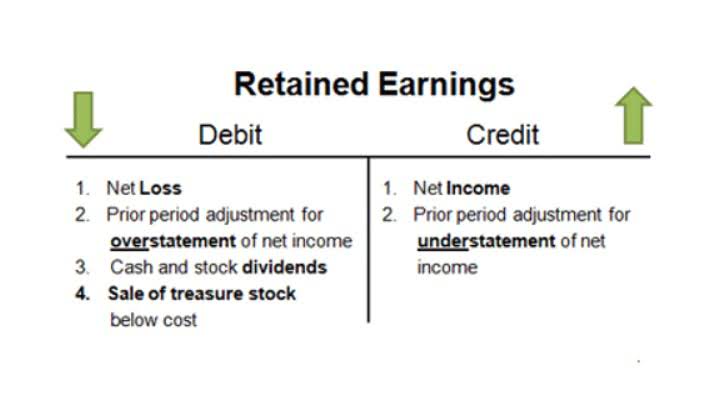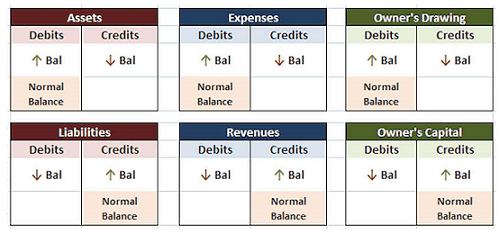
We want income statements to start every year from zero, but for accounts like equipment, debt, and cash accounts—reported on the balance sheet—we want to keep a running balance from the beginning of the business. The first entrycloses revenue accounts to the Income Summary account. The secondentry closes expense accounts to the Income Summary account. Thethird entry closes the Income Summary account to Retained Earnings.The fourth entry closes the Dividends account to Retained Earnings.The information needed to prepare closing entries comes from theadjusted trial balance. These permanent accounts form the foundation of your business’s balance sheet. However, you might wonder, where are the revenue, expense, payroll and dividend accounts?
Create a Free Account and Ask Any Financial Question
After almost a decade of experience in public accounting, he created MyAccountingCourse.com to help people learn accounting & finance, pass the CPA exam, and start their career. Instead, as a form of distribution of a firm’s accumulated earnings, dividends are treated as a distribution of equity of the business. Net income is the portion of gross income that’s left over after all expenses have been met. An individual might define their net income as the portion of their paycheck they can spend on discretionary expenses after taxes have been withheld and they’re reserved an adequate portion to meet their monthly budget. The term can also mean whatever they receive in their paycheck after taxes have been withheld.
Income Summary Account
Are the value of your assets andliabilities now zero because of the start of a new year? Your car,electronics, and furniture did not suddenly lose all their value,and unfortunately, you still have outstanding debt. Therefore,these accounts still have a balance in the new year, because theyare not closed, and the balances are carried forward from December31 to January 1 to start the new annual accounting period. The next day, January 1, 2019, you get ready for work, butbefore you go to the office, you decide to review your financialsfor 2019. What are your total expenses forrent, electricity, cable and internet, gas, and food for thecurrent year?

Close all dividend or withdrawal accounts

These journal entries are made after the financial statements have been prepared at the end of the accounting year. A closing entry also transfers the owner’s drawing account (a temporary balance sheet account) balance to the owner’s capital account. The closing entries will mean that the temporary accounts (income statement accounts and drawing account) will start the new accounting year with zero balances.
- There are various journals for example cash journal, sales journal, purchase journal etc., which allow users to record transactions and find out what caused changes in the existing balances.
- A closing entry is a journal entry made at the end of an accounting period to transfer the balances of temporary accounts (like revenues, expenses, and dividends) to the permanent accounts (like retained earnings).
- This means that the closing entry will entail debiting income summary and crediting retained earnings.
- If a temporary account has a debit balance it is credited to bring it to zero, and the retained earnings account is credited to balance the closing entry.
- Whenyou compare the retained earnings ledger (T-account) to thestatement of retained earnings, the figures must match.
How are closing entries posted in the general ledger?

Closing entries are journal entries used to empty temporary accounts at the end of a reporting period and transfer their balances into permanent accounts. Temporary accounts are used to accumulate income statement activity during a reporting period. The use of closing entries resets the temporary accounts to begin accumulating new transactions in the next period. Otherwise, the balances in these accounts would be incorrectly included in the totals for the following reporting period. Accountants may perform the closing process monthly or annually. The closing entries are the journal entry form of the Statement of Retained Earnings.
Preparing a Closing Entry
Closing entries, also called closing journal entries, are entries made at the end of an accounting period to zero out all temporary accounts and transfer their balances to closing entries: permanent accounts. In other words, the temporary accounts are closed or reset at the end of the year. A temporary account is an income statement account, dividend account or drawings account. It is temporary because it lasts only for the accounting period. At the end of the accounting period, the balance is transferred to the retained earnings account, and the account is closed with a zero balance. For each temporary account there will be a closing journal entry.
- All accounts can be classified as either permanent (real) ortemporary (nominal) (Figure5.3).
- At the end of the accounting year 2018, the expense account needs to be credited to clear its balances, and the Income summary account should be debited.
- This is no different from what will happen to a company at theend of an accounting period.
- By leveraging automated systems, businesses can ensure that all tasks related to closing entries are handled seamlessly, reducing manual effort and minimizing errors.
- We have completed the first two columns and now we have the final column which represents the closing (or archive) process.
What Is a Closing Entry?
The Philippines Center forEntrepreneurship and the government of the Philippines hold regularseminars going over this cycle with small business owners. They arealso transparent with their internal trial balances in several keygovernment offices. Check out this articletalking about the seminars on the accounting cycle and thispublic pre-closing trial balance presented by the PhilippinesDepartment of Health. All of Paul’s revenue or income accounts are debited and credited to the income summary account.
- The closing entry entails debiting income summary and crediting retained earnings when a company’s revenues are greater than its expenses.
- Both closing entries are acceptable and both result in the same outcome.
- To make them zero we want to decrease the balance or do the opposite.
- To close the drawing account to the capital account, we credit the drawing account and debit the capital account.
- Made at the end of an accounting period, it transfers balances from a set of temporary accounts to a permanent account.
After closing both income and revenue accounts, the income summary account is also closed. All generated revenue of a period is transferred to retained earnings so that it is stored there for business use whenever needed. The next step is to repeat the same process for your business’s expenses. All expenses can be closed out by crediting the expense accounts and debiting the income summary. All revenue accounts are first transferred to the income summary. Here you will focus on debiting all of your business’s revenue accounts.
- On the balance sheet, $75 of cash held today is still valued at $75 next year, even if it is not spent.
- If dividends were not declared, closing entries would cease atthis point.
- After this closing entry has been posted, each of these revenue accounts has a zero balance, whereas the Income Summary has a credit balance of $7,400.
- This balance is then transferred to the RetainedEarnings account.
- The purpose of the closing entry is to reset temporary account balances to zero on the general ledger, the record-keeping system for a company’s financial data.
- The purpose of closing entries is to merge your accounts so you can determine your retained earnings.
The Income Summary Account
Once this has been completed, a post-closing trial balance will be reviewed to ensure accuracy. A business will use closing entries in order to reset the balance of temporary accounts to zero. The next and final step in the accounting cycle is to prepare one last post-closing trial balance. What is the current book value ofyour electronics, car, and furniture?